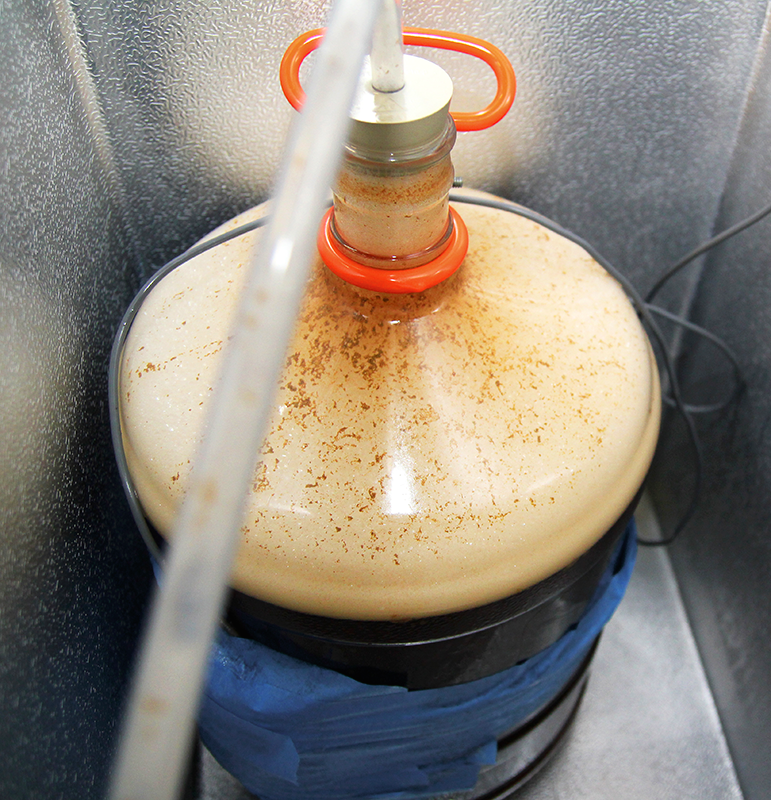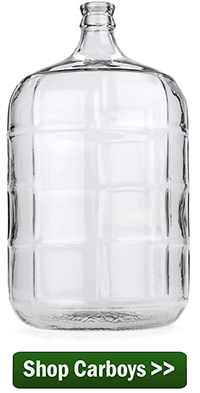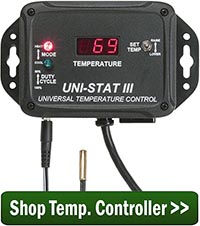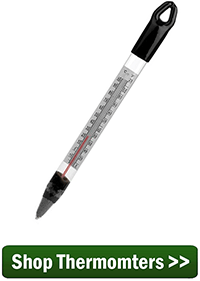 There’s a tendency among homebrewers, myself included, to put an emphasis on recipe development. However, there are many factors beyond the beer recipe which affect the final beer. Just like with cooking, when the chef’s technique and process can have a profound effect on the food, a brewer’s skill and expertise can make or break what might start out as a good recipe.
There’s a tendency among homebrewers, myself included, to put an emphasis on recipe development. However, there are many factors beyond the beer recipe which affect the final beer. Just like with cooking, when the chef’s technique and process can have a profound effect on the food, a brewer’s skill and expertise can make or break what might start out as a good recipe.
One of the most important factors affecting a beer is fermentation temperature. There should be some attempt at controlling fermentation temperature. This is because allowing a beer to ferment outside of recommended temperatures can produce undesirable off-flavors, or worse, stop the fermentation, all together.
For example, the hefeweizen yeast strain of beer yeast is know for producing banana and clove flavors that, when in moderation, are desirable for the style. But when the same yeast strain ferments too hot, the banana flavors get produced in excess and result in a banana bomb! This is only one example of why controlling fermentation temperature is important. The same thing can happen with many other beer yeast strains. These flavor and aroma characteristics, called phenols, must be controlled so that they don’t overwhelm your beer.
So what’s the right temperature for fermentation?
Generally speaking, ales ferment at a warmer temperature than lagers. Most ale yeasts perform best between 60 and 70°F, while lager yeast tend to work well between about 40 and 50°F. Conditioning post fermentation temperatures may be even lower, in some cases approaching freezing.
So my house is at 70°F – I should be fine to make ales right?
Not exactly. Yeast cells give off heat as they run around consuming all that sugar in your beer. This can raise the fermentation temperature 5-10 degrees above the ambient temperature in the room — and possibly push you out of the comfortable range for your yeast strain. So, controlling fermentation temperature isn’t necessarily about controlling your room thermostat.
How to go about controlling fermentation temperature
There are a few techniques for controlling fermentation temperature that are used by homebrewers:
- Cold room – Find a room, garage or shed that stays well within the recommended temperature range for the yeast strain you’re using. For this reason, many brewers wait until winter for making certain styles of beer.
- Bucket/ice/towel –
 Brewers on a budget can gain some level of temperature control by placing the fermenter in a large container of water and periodically adding ice or frozen water bottles to it. A wet towel or t-shirt can be wrapped around the fermenter to provide a wicking effect. Just like how sweating cools the body, the towel can cool the fermenter.
Brewers on a budget can gain some level of temperature control by placing the fermenter in a large container of water and periodically adding ice or frozen water bottles to it. A wet towel or t-shirt can be wrapped around the fermenter to provide a wicking effect. Just like how sweating cools the body, the towel can cool the fermenter. - Fermentation Chamber – This is far and away the best way to control fermentation temperature. You are essentially taking a chest freezer or refrigerator and attaching to it a power interrupt thermostat that can sustain higher temperatures evenly.
Additional Tips for Controlling Fermentation Temperature
- Each beer yeast should be packaged with a recommended temperature range. Do your best to keep your temperature controlled to stay within that range.
- This said, not everyone will have the ability to get their fermentation temperatures as low as they would like. Beginning Brewers often start with ales because it is easier to ferment ale at room temperature than it is to ferment beers at cooler lager temperatures.

- Some beer yeast strains do better at warmer temperatures and benefit from a certain level of esters and phenolics. If you have trouble getting your fermentation temperatures low, you might want to stick with Belgian styles, as esters and phenolics are generally desirable. I’ve heard of Saison strains working well even into the high 90s.
What tips do you have for controlling fermentation temperature?
—–
David Ackley is a beer writer, brewer, and self-described “craft beer crusader.” He holds a General Certificate in Brewing from the Institute of Brewing and Distilling and is founder and editor of the Local Beer Blog.
